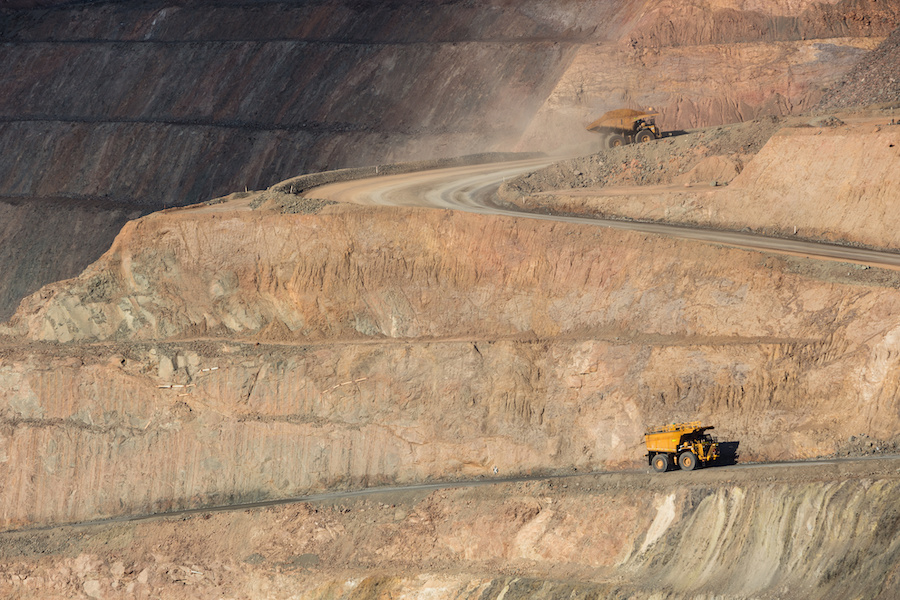Ontario faces major decisions as future of power grid outlined
Currently, Ontario has a maximum capacity of about 30,000 megawatts, of which about 49 per cent is nuclear, 25 per cent is hydro, 17 per cent is coal, seven per cent is gas, and two per cent comes from other emerging energy technologies, such as wind power. Now, the province must decide what to build for a stable, self-reliant future. Hydro power is clean and economical but its dependence on weather can be a negative. Experts also say the province has maxed out most of its potential and can only make moderate gains in the future through small projects. Coal is linked to environmental and health problems -- McGuinty has promised to scrap Ontario's four coal-powered plants by 2009 -- and gas, though reliable, can be an exceedingly expensive option, given its constantly changing price. That leaves nuclear and green power -- not to mention a heated debate about which is the better option.
Duncan won't listen to 'Neanderthals'
Ontario has no plans to listen to "Neanderthals" who want the province to keep its coal-burning power plants operating, even if that's what a report being prepared for the government recommends, says Energy Minister Dwight Duncan. Duncan's resistance to coal is a mistake, argues Energy Probe executive director Tom Adams.Adams wants the province to keep at least two units at its Lambton station, south of Sarnia in southern Ontario, which rank fourth and ninth out of 403 in the report's list of the cleanest plants on the continent.
Toronto Star Editorial: New reactors vital for hydro system
Unless ways can be found to burn coal cleanly, like it or not, nuclear power will inevitably remain an essential part of the mix. It is clean, emissions free, and despite the breakdowns and recurring problems at the Pickering, Darlington and Bruce facilities, it has proven to be an affordable and, by and large, a reliable energy source. Even with their problems, nuclear plants generate about 50 per cent of all the province's electricity.
So yes Virginia you can be a right wing pro-capitalist environmentalist as Energy Probe and its associates prove *(see links ).
In Ontario Energy Probe is a right wing pro coal, pro P3, anti-union, environmental think tank. It is associated with other right wing think tanks like Probe International, the influential right wing Donner Foundation
and the Fraser Institute.
Energy Probe deliberately modeled itself on the public policy advocacy group Pollution Probe, which is a real public interest foundation of business, unions, non-government agencies, scientists and research councils, the public and government.
Energy Probe is a consumer and environmental research team, active in the fight against nuclear power, and dedicated to resource conservation, economic efficiency, and effective utility regulation.
They proclaim themselves anti-nuke, they are also critical of natural gas fired electrical plants. Leaving them to be promoters of King Coal.
Toronto: The debate over coal-fired power stations is sure to heat up after a report saying they aren't as big a polluter as originally thought. In fact, a report by Energy Probe says two of the units are among the cleanest in North America.
Units three and four at the Lambton generating station near Sarnia rank in the top 10 cleanest among 403 coal generation units in Canada, the U.S. and Mexico.
Energy Probes position on coal fired power plants, not surprizingly is the same as that of the Fraser Institute.
Ontario Government in the Dark on Coal Plant Closings: Shutting Down Coal-fired Power Plants will do more Harm than Good
Their criticism of CANDU reactors, the safest nuclear power system in the world, is of course a criticism of government funded and sponsored nuclear power. They aren't opposed to private nuclear power, just government funded and operated nuclear power like CANDU.
They view Alternative energy sources as important but ONLY if it is created by the private sector.
National Post October 8/2004 Wind at our backs by Lawrence Solomon
The windmill entrepreneurs, unable to compete against the government-mandated subsidies, were snuffed out, ending their innovations and replacing their renewable-energy technology with power from remote power utilities that typically relied on burning coal. Wind technology remained extinguished for decades, until the environmental movement resurrected it in the late 1970s. Now wind technology is roaring back, logging the fastest growth of any energy technology in the world.And they can sound very reasonable in press releases until we uncover their real agenda, the privatization of utilities and public services.
Then they join the rest of the right wing lobbyists, the NCC, Fraser Institute, Atlantic Institute for Market Studies, the C.D. Howe institute, etc. etc. ad naseum, as another voice for the privatization of everything. Making any research, public policy advocacy they do political.
In 2002 one of Energy Probes directors published a book promoting the privatization of water utilites in Canada. The book was a runner up for the Donner Book Prize on Public Policy.
LIQUID ASSETS:
Privatizing and Regulating Canada's Water Utilities
by Elizabeth Brubaker (University of Toronto Centre for Public Management)Elizabeth Brubaker is the Executive Director of Environment Probe, a Toronto-based environmental think-tank. She is the author of Property Rights in the Defence of Nature. MORE THAN TWO YEARS HAVE PASSED SINCE
MORE THAN TWO YEARS HAVE PASSED SINCE contaminated water killed seven people and made 2,300 ill in Walkerton, Ontario. "People widely referred to Walkerton as a wake-up call, but many utilities and regulators are still sleeping," says Brubaker. Liquid Assets is a first-class book on an important subject. Intriguing, well-written and meticulously documented, the author provides an authoritative and readable study of privatization of water and waste-water facilities around the world.
Energy Probe-The 10 principles that guide us
The following principles have evolved from our 20-year-long analysis of the root causes of environmental destruction and of the elements of a sustainable society:
- We work for environmental sustainability by promoting property rights (private or communal), markets, the rule of law, the right to know, accountability through liability, cost and risk internalization, economic efficiency, competition, consumer choice, and an informed public.
- We strive to eliminate tragedies of the commons1 by advocating property rights where resources can be exclusive, divisible, and alienable. In these situations, EPRF believes resources are most sustainably managed by the users of the resources themselves. EPRF advocates property rights:
- to establish and preserve rights and responsibilities;
- to account fully for social and environmental costs based on the values assigned by the rights holders; and
- to internalize risks and costs (and to eliminate moral hazards2) in decision making.
- We favour court actions based on the common law of nuisance, trespass, and riparian rights to empower individuals to protect themselves from environmental harm. We do not believe that governments should have the discretion to negotiate with polluters, or with other parties, to override traditional common law protections.
- We generally oppose expropriation, which often results in environmental harm. We believe that voluntary agreements more fully internalize costs, protect the environment, and ensure economic efficiency.
- We argue for the break up of unnatural monopolies, created by political or regulatory decree. Where natural monopolies exist, we advocate regulation that is mandated to protect the interests of consumers.
- Where property rights cannot easily or affordably be assigned or enforced, we strive to eliminate tragic commons through statutory law and regulation. Although rigorous regulation is often required, regulatory authority must seek to avoid creating barriers to entry, stifling innovation, interrupting the flow of information, and forcing regulated parties to act against their best judgement.
- We work to ensure the integrity of regulatory systems and the strict enforcement of laws that penalize unauthorized pollution. To eliminate biases and conflicts of interest, and to ensure that public and private sector polluters are treated equally, we advocate independent regulators, who are subject to due process and judicial review, and regulatory processes that require full disclosure of information.
- We work to establish decentralized decision-making processes and to devolve decision making to the lowest practicable level – that which is closest to the individual.
- We oppose subsidies to resource use. Where society favours subsidies to ensure social equity, we favour subsidizing resource users with direct payments, untied to the level of consumption, rather than subsidies that lower the apparent cost of the resource.
- We oppose the socialization of private sector costs and risks through government subsidies and indemnities to the corporate sector. For example, while we approve of private insurance as a way to internalize risks and costs, we oppose government indemnities to resource or financial sectors, particularly if those indemnities protect risk takers and polluters from the risks and costs of their activities.
Energy Probe also runs a so called Consumer Policy Institute. Like the Canadian Taxpayers Federation, generic terms like Taxpayer and Consumer are used by the right wing business lobbies to appear as if they are speaking for the public rather than the special interests they really are lobbying for...private sector contol of public services.
Consumer Policy Institute is a division of Energy Probe Research Foundation. Incorporated in 1980, Energy Probe is a federally recognized charitable organization, financially independent of governments and corporations.
EPRF has always promoted development that furthered our social, economic and environmental wellbeing. Some parts of our foundation focus on protecting the environment while respecting our social and economic needs; CPI focuses on our social and economic needs while respecting environmental needs. In today's society, with the communications revolution and trade liberalization eroding the power of regional, national, and international authorities, the influence of individuals and their local communities grows. A concern for our more immediate "social environments" or "human ecology" now accompanies our work to protect the natural environment.
Because the empowerment of individuals and of small communities is so vital to the well-being and stability of this new human ecology, empowerment is a central theme in CPI's work. Equally important to CPI's mission is an understanding that individuals' empowerment can become mere anarchy or oppression if it is not rooted in by a sense of responsibility to each other and to the natural world.
Our recent accomplishments and current projects reflect this conviction.
Health Reform
To protect and promote Canadian Medicare we have proposed a model of publicly funded health allowances or Medical Savings Accounts that finds true efficiencies while maintaining the Canada Health Act's five principles. The thrust of our work is to restore the integrity of the relationship between physicians and their doctors by empowering patients.
Airports
A sale for full market value of Canada's federally-owned airports would yield billions of dollars in immediate revenue for the cash-strapped government, as well as hundreds of millions a year in ongoing tax revenue. But instead of turning airports over to efficient, customer-oriented operators who will lower costs and increase service, the federal government has begun leasing them to local non-profit authorities set up by municipal councils. Consumer Policy Institute's study, Benefitting Consumers and the Economy Through Airport Privatization informs Canadians of the benefits of selling federal airports to the public.
Economic Policy
Transportation
Canada's public transit monopolies, already woefully inadequate and overly expensive, could soon be at the end of their road. By introducing competition to Canada's public transit systems, service would improve and costs would come down. Consumer Policy Institute is working to break up the public transit monopolies and give Canadians access to expanded, affordable service.
Our existing system of taxi regulation increases costs and decreases service, discriminating particularly against the poor and women, who use taxis most, while denying opportunities to immigrants and other new entrants into the labour force. Consumer Policy Institute reforms would reverse these inequities.
Canada's public transit monopolies, already woefully inadequate and overly expensive, could soon be at the end of their road. By introducing competition to Canada's public transit systems, service would improve and costs would come down. Consumer Policy Institute is working to break up the public transit monopolies and give Canadians access to expanded, affordable service.














